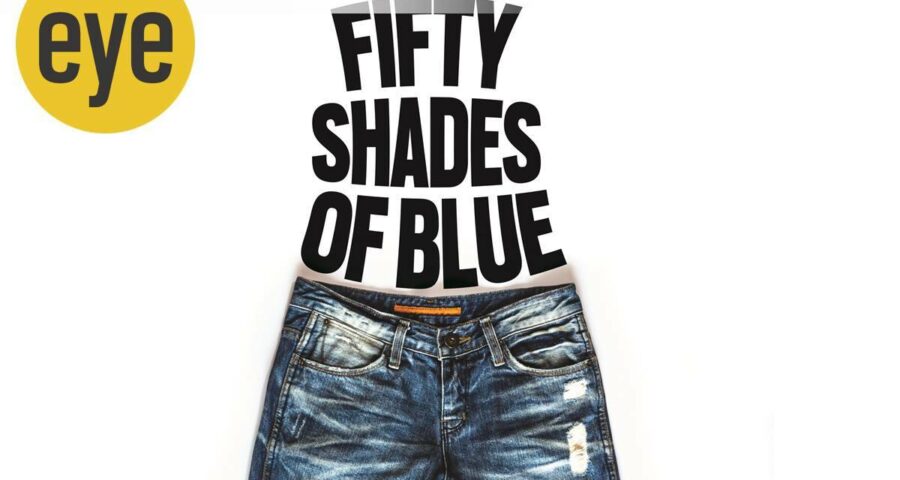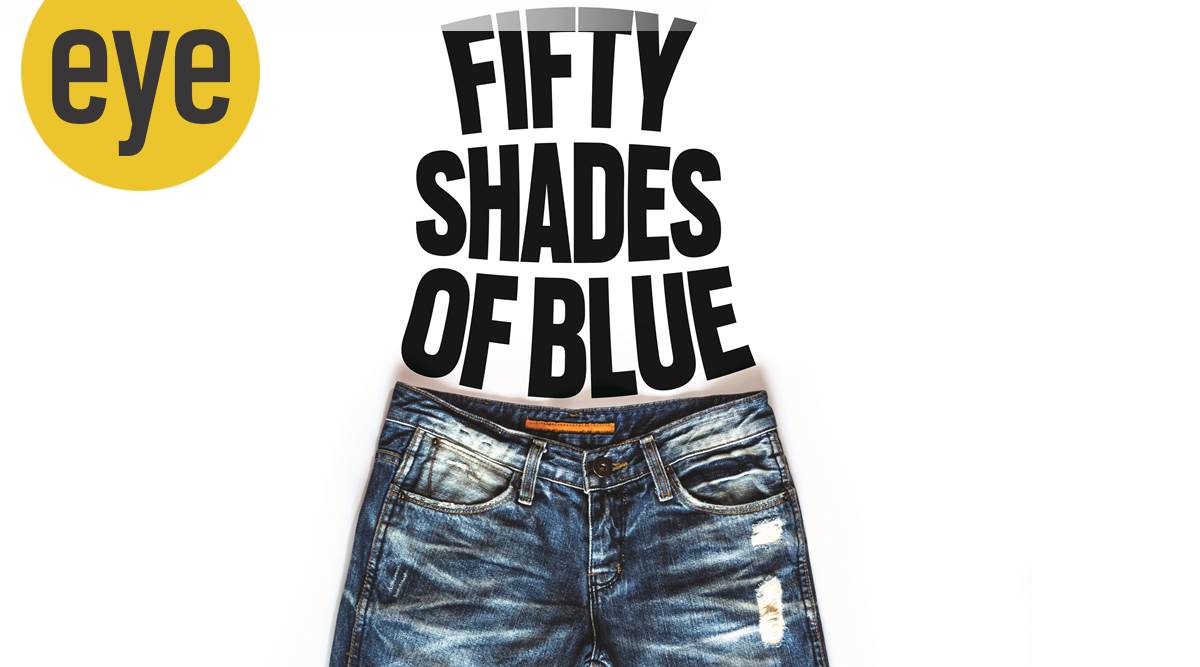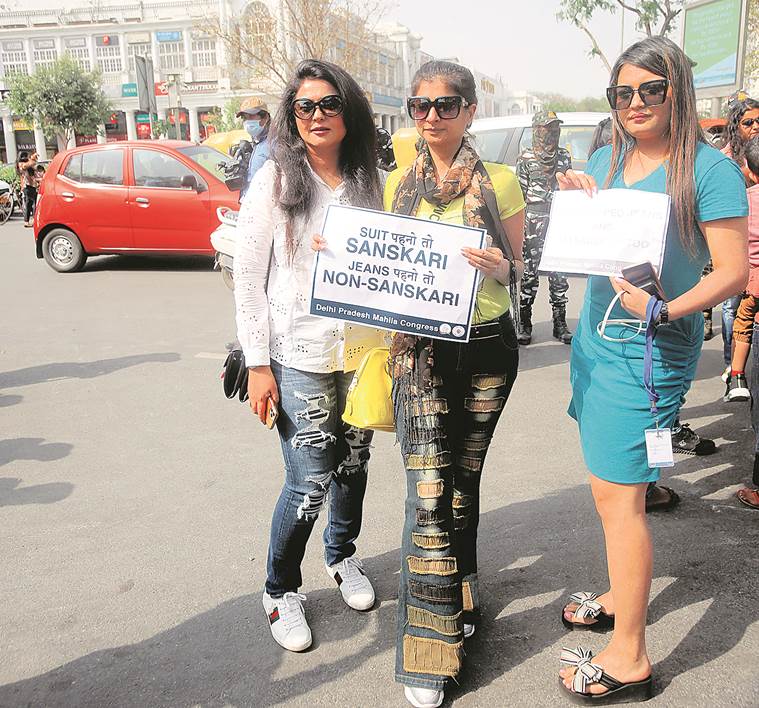Is it a fashion statement or a faux pas? In a country like India, that has steep economic disparities, ripped clothes carry different implications for different people
On one of Delhi Gymkhana Club’s famed Thursday nights, I was unceremoniously evicted for wearing what were, in my opinion, charmingly frayed jeans. The buzzing dining area has hawk-eyed senior members permanently perched at the bar, waiting to pounce on people who flout their rules. The Gymkhana, like all institutions that trade on exclusivity, takes pride in being the last bastion of old-world tradition. Right or wrong, it functions on the premise that the public lacks a sense of decorum. Hence, they must be saved from themselves by a dress code. In my defence, I was clueless that my slightly-torn denims might merit an eviction. I also can’t help contrast my hasty retreat that night with a very different evening in Tokyo, when I was denied entry into a club because my clothes weren’t risqué enough.
No doubt, when in Rome… is a good motto to follow when it comes to deciding outfits. Style has a cultural context, especially in India, where there are people of widely different social and economic backgrounds. What’s hard for people to wrap their heads around — it’s not just the Uttarakhand chief minister who thinks frayed jeans equals frayed morals — is that those who intentionally wear ripped jeans aren’t always flamboyant non-conformists or the dregs of society. In the last month, women across age groups and all walks of life have posted pictures of themselves in ripped jeans on Twitter, in retaliation to Tirath Singh Rawat’s unfortunate remark that women dressed in distressed denims won’t impart the right values to their offsprings. In a video, Rawat went on to blanket condemn Indian youth and bemoan their style, saying that when they go shopping and don’t find torn jeans, “they cut them anyway”.
What exactly is it about torn jeans that gets people so enraged in the 21st century? Sure, there was a time long ago when rips signified rebellion: early British punks wore them as an expression of anger against middle-class norms, along with pink hair, tattoos and junk jewelry (think of the fashion of musicians David Bowie and Boy George). The music festival Woodstock, in 1969, championed the deadbeat look: images from there showcase a sea of faded jeans, slung low on the hip bone, worn to show off a midriff and belly button. And voila, hippie chic was born.
May the irony also not be lost that torn denims with flower motifs and handmade quirky embellishments came about as an alternative to mass consumerism. Now, torn jeans, far from being countercultural, are staidly mainstream, with big fashion brands like H&M, Zara, Calvin Klein and Abercrombie & Fitch bringing out lines every season, perhaps, pushing the rip a little more every time. In fact, distressed denims are so ubiquitous that the brand Next offers a ripped pair in their maternity section.
The latest style in shabby chic, the one Rawat is probably alluding to, is not merely threadbare; there are gaping holes on the knees and vicious tears on the thighs. And yes, they’re very much on trend, much like paint-splattered jeans were in the late 1980s. So, when people react the way Rawat did, maybe we need to recognise that the world of fashion can be baffling to non-observers. If you think about it, it’s kind of ridiculous to be walking around in tattered jeans, exposed knees and thighs protruding. After all, nobody wears torn dresses, T-shirts or pants, for that matter.
“I’m not certain it’s the skin showing they find objectionable,” says Samant Chauhan, a Delhi-based fashion designer, who grew up in Jamalpur before moving to Delhi to join the National Institute of Fashion Technology. “People still equate neatness with professionalism. Their opinion is why would a sane adult, who’s doing well in life, have holes in his jeans,” says Chauhan, who owns distressed denims but prefers to wear his jeans intact.
In a country like India, with its steep economic disparities, ripped clothes carry different implications for different people. In the interiors of India that have gone untouched by liberalisation, rips and tears symbolise something far removed from style. They signal a lack of economic capital that limits one’s access to better clothes. It’s only once life has travelled full circle — and after owning and discarding new clothes at so much of a whim that newness loses its sheen — that one develops the sartorial confidence to emerge in tatters.
From the vantage point of fashion history, adorning oneself in torn fabric as a form of self-expression is relatively new. The discerning fashionistas of previous generations preferred to carve out their images in complicated silks and tulle. But fashion is nothing if not contrarian; it required the cravats and gowns that came before to make the alternate lifestyle ripped jeans represent, even more enticing.
Our sensibilities are affected by our environment, our background, and, indeed, our opportunities. Designer Rahul Mishra, who participated in the Paris Haute Couture Week’s online show in 2020, recalls his teen years growing up in a village near Kanpur. His stern father, a doctor, would get upset at his long hair. “He is very proud now but there was a non-seriousness associated with what I wanted to do,” says Mishra, who eventually ran away from home to pursue a career in design. Mishra points out, it was only uber trendy and “Westernised” women like Zeenat Aman and Parveen Babi who wore jeans on screen in the 1970s. He suggests the backlash against ripped ones stems from inherent prejudice (the misnomer “fast girl” comes to mind). And certainly, a lack of imagination. “There’s this thought yeh nalaayak hai (He’s unworthy),” says Mishra, adding that anyone overly concerned with fripperies like appearance faces this. That attitude persists also because while denims are worn by the entire populace of nations in the West, jeans remain the clothing of choice for a relatively small percentage of Indian women.
Whether Rawat and his ilk like it or not, knee-ripped jeans is a look that is slowly and surely infiltrating every nook and cranny of India. Rashi Bhimani, a trousseau consultant based in Gurugram, says she notices important changes in street chic when she travels back to her home towns, Patna and Dhanbad. “I see college students in torn jeans everywhere. The difference is, in Delhi, they style them with a tank top, and over there, with a kurti,” says Bhimani, recalling that in her childhood a pair of Bermuda shorts would have been considered radical. A certain demureness was expected of girls and it was understood that when she left the house it would be in a skirt well below her knees. “Unlike us, youngsters these days can catch up on style trends on social media,” says Bhimani, adding, “And Amazon delivers everywhere.” It’s true that before Instagram, only a select few invested in the fashion industry followed trends. Now, fashion has been completely democratised; everyone is participating online, as an observer, a critic or a consumer.
Perhaps, we are looking at the brouhaha around ripped jeans all wrong, and we are actually being played by the fashion industry to buy yet more items of clothing that we really don’t need. Apparel companies need to survive and everything that could have been done to blue jeans has been done already. They’ve been lightened, darkened, faded, made tighter, higher and lower. They’ve been bejewelled and embroidered, holes drilled and glitter stuck on. Since they are running out of options to be original, the best they can do is rip them apart in areas unexplored before. No wonder, in 2021, long rips on the upper thigh are de rigueur. I’m pretty sure desperate originality was behind the bizarre spectacle of the Extreme Cut Out Jean, sold by a Los Angeles-based brand, Carmar Denim, a couple of years ago. They became a talking point because to call the Extreme Cut Out wildly revealing is an understatement. There’s a little fabric at the knee and ankles. That’s it. The waist has exposed pockets and is held together by a zip and buttons. Hiding one’s modesty is not an option in them and the true irony lay in the cost: $168 (Rs 12,500). It’s a classic example of reinvention for the heck of it; though truth be told, they had a lurid, slapstick appeal. Predictably, they faded away fast, after achieving the objective of trending wildly.
When styled correctly, destroyed denims can be cool. It’s a happy compromise between dressing fancy and dressing down. The rips and holes we’re seeing now, though, are dangerously large and can come across as a gimmicky overstatement. One has to wonder, if in trying not to look like they’re trying too hard, a wearer may end up achieving precisely the opposite impact: of inauthenticity. There is a fine line between distressed and quirky when it comes to mangled wear. To create the illusion of don’t-care-a-damn via jeans requires a few strategic rips, not a pair that might be hailed as an engineering feat for not falling apart.
(Leher Kala is director, Hutkay Films, and a columnist with The Indian Express)
Source: Read Full Article





